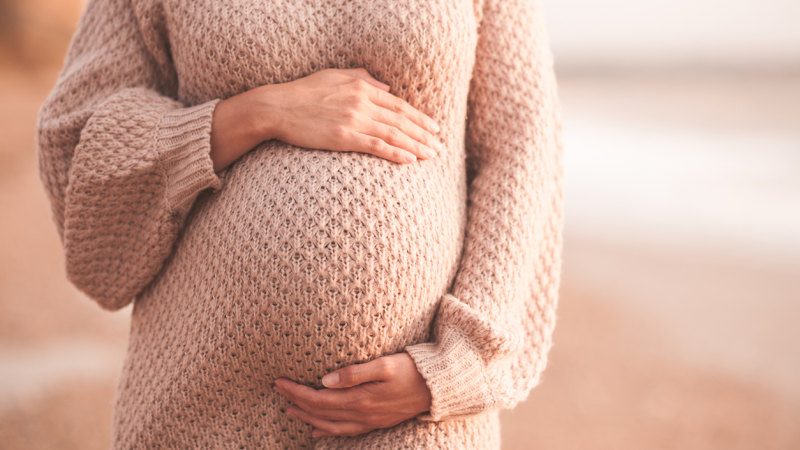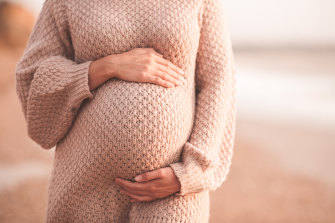Britney Spears said she had perinatal depression. Here’s what it is
When Britney Spears announced her third pregnancy in an Instagram post on Monday, she also made another disclosure: She said she suffered from perinatal depression during a previous pregnancy.
“I have to say it is absolutely horrible,” Spears wrote.
Research shows that at least one in five pregnant people have experienced perinatal depression. Credit:iStock
Spears, 40, has two children – Sean Preston, 16, and Jayden James, 15 – with ex-husband Kevin Federline. She didn’t specify when she suffered from perinatal depression, what her symptoms were or how long they lasted.
But her post resonated, with more than 2 million people leaving likes and comments. “Women didn’t talk about it back then,” she wrote. “Thank Jesus we don’t have to keep that pain a reserved proper secret.”
Spears isn’t alone: Research shows that at least one in five pregnant people have experienced perinatal depression.
“The experience of depression during pregnancy and postpartum is super common,” said Karen Tabb Dina, an associate professor in the School of Social Work at the University of Illinois, US.
Spears has two children with ex-husband Kevin Federline, Jayden James Federline (left) and Sean Preston Federline (right). Credit:Getty Images
But for Rachelle Robertello, who is eight and a half months pregnant and experiencing perinatal depression, it still feels like there’s a lack of awareness around the condition.
“I see articles all the time on postpartum depression, what warning signs to look out for,” said Robertello, 28, a graduate student living in Virginia, US. But “no one talks about” perinatal depression, she added.
Unlike postnatal depression, which occurs after childbirth, perinatal depression begins during pregnancy and can last for an “almost two-year window” – from the start of a pregnancy to the end of the first year after birth, according to Tabb Dina.
Research suggests that perinatal depression is “caused by a combination of genetic and environmental factors,” including life stress, the demands of childbearing and changes in hormones during and after pregnancy, according to the US National Institute of Mental Health. Symptoms can include “feelings of extreme sadness, anxiety, and fatigue that may make it difficult for them to carry out daily tasks, including caring for themselves or others.”
Other symptoms, according to Tabb Dina, can include “any sharp change in your normal mood,” which may manifest as feeling rage, “the inability to experience joy about the pregnancy,” difficulty sleeping and the loss of appetite, she said.
Identifying these symptoms early on is “super important,” Tabb Dina added: For most people, the signs and symptoms of what will later become postpartum depression start during pregnancy.
In Australia, postnatal depression occurs after approximately 14 per cent of births, according to the Black Dog Institute. Studies also suggest perinatal depression might have become even more common during the pandemic, with up to 1 in 4 pregnant people experiencing depression.
But doctors don’t always discuss or screen for symptoms of perinatal depression in pregnant people, Tabb Dina said. And one 2010 study published in the Journal of Women’s Health found that the majority of people who screen positive for depression after childbirth did not receive mental health treatment from their providers during pregnancy or postpartum.
Robertello said she has been suffering from depression for years, but her symptoms during pregnancy, which include fatigue and a lack of excitement about her pregnancy, have been “extra debilitating.”
“That’s been really hard, because . . . [my husband and I] want kids, it’s not, like, an unexpected outcome,” she said.
To cope, she’s “tried to do every single fun thing that’s on the list of things to do during pregnancy” – including having a baby shower and taking maternity photos, she said – but “it’s like I’m just going through the motions and not actually excited.”
Robertello brought up her concerns with her doctors in her first trimester, and they increased her dosage of the antidepressant Zoloft, she said, which helped “a little.”
But it wasn’t until last month, when she was in her third trimester, that Robertello learned about perinatal depression, which she discovered by Googling her symptoms, she said.
Tamar Canady, a 42-year-old photographer and substitute teacher based in Phoenix, US also used Google to diagnose herself with perinatal depression a few years after her pregnancy nearly two decades ago, she said.
“We’ve all heard of depression after the baby . . . but I had never heard of during-pregnancy depression,” said Canady, who added that her main symptom was paranoia that her baby would be taken from her.
Tabb Dina said that Google’s self-assessment tool for postnatal depression can, indeed, be a useful informational resource to help people understand possible perinatal or postnatal depression symptoms. (The tool notes that it is not an official medical diagnosis and that people should talk to their doctors for further advice.)
When Canady saw Spears’ post about her new pregnancy and her past experience with perinatal depression, she “loved how she didn’t make a big deal about it . . . like, ‘Yes, this is a thing that happens to women, and a thing that I’m concerned about and I’m prepared to deal with.’ ”
Robertello, for her part, was struck by the fact that Spears “actually used the term ‘perinatal depression,’” she said, adding that “it was just nice to see recognition [of] that.”
Spears, who was released from her conservatorship in November, said last June in testimony that the people who managed her conservatorship had refused to let her get her IUD removed so she could try to have another child. In her Instagram post on Monday, she said that she will be doing “yoga every day” during her pregnancy this time around.
For people suffering from or at risk of developing perinatal depression, treatment options include medication prescribed by a doctor, which Tabb Dina calls “the gold standard” for people suffering from perinatal depression, though she acknowledged that some pregnant people prefer to avoid taking medication during pregnancy.
Experts recommend that pregnant people should “work with their health care provider to weigh the risks and benefits of treatment” and note that antidepressants can take six to eight weeks to begin working. It also notes that people may need to try several different medications “before finding the one that improves their symptoms and has manageable side effects.”
Non-medication options include home visiting programs with professionals who practice cognitive behavioural therapy – which Tabb Dina notes can be especially impactful for people who already have other children who they may not be able to leave alone – and group prenatal care sessions, which allow people to share their experiences and symptoms with other pregnant people.
“You might listen to someone else and say, ‘I didn’t know that was normal,’” she said.
Robertello has turned to a pregnancy app, Peanut, for those types of discussions, she said: “That’s been a comfort, just reading other peoples’ posts, having someone comment back to you, sort of saying, ‘What you’re going through is valid.’”
Canady’s pregnancy is long behind her, but she works with pregnant people all the time through her photography business, photographing newborns and coordinating maternity shoots.
Seeing Spears’s post, she said, made her think about how she could do more to share information about perinatal depression with the parents she works with who may be struggling.
Maybe, she said, she’ll start by putting a link to resources on her website.
The Washington Post.
Make the most of your health, relationships, fitness and nutrition with our Live Well newsletter. Get it in your inbox every Monday.
Most Viewed in Lifestyle
From our partners
Source: Read Full Article


